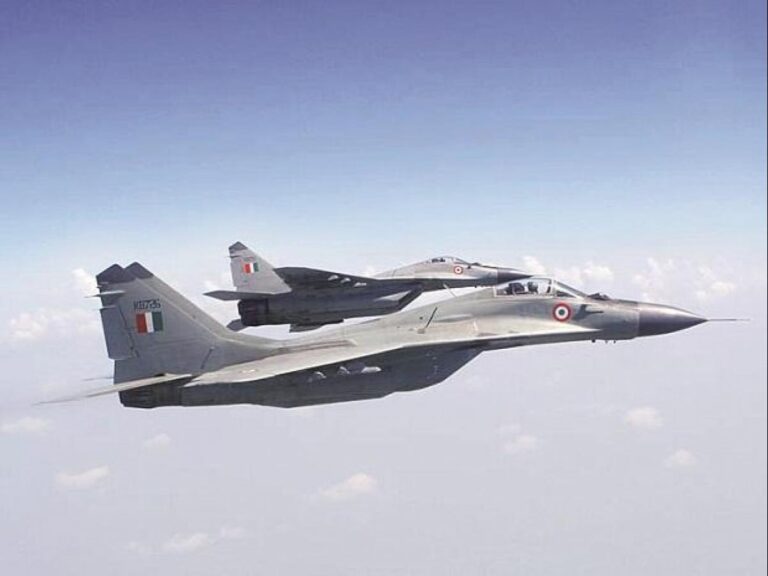
The MiG-29 and Mirage 2000 are both fast and extremely agile fighter aircraft — but which of these formidable machines would win in a dogfight — the French beauty or the Russian beast? We spoke to a man with the answer, Air Marshal Harish Masand.
“Running through my papers in an attempt to organise my retired life, which now essentially revolves around the golf course or the study room so that I could start punching the keyboard instead of the buttons in the cockpit, I came across my log books the other day. As any die-hard fighter pilot would vouch for, log books can’t just be put down without at least a bit of reminiscing on the good old times, remembering the freedom of the skies and chasing dream-clouds not just like a breath of fresh air but 100% oxygen. What caught my eye that day was the entry starting 30 Mar 1988 of Ex Lightning. Even after two decades, the memory of those two weeks, till the middle of April, when we fooled around with the Mirage 2000s with our mint-fresh MiG-29s, is still vivid in my mind and took me back nostalgically to the old days with the smell of jet fuel instead of cologne, the sweat on your overalls, even if you changed one everyday and wore a fresh one, and of course the quiet roar of the jets despite the air-conditioning and sealing of the 29 cockpit muffling the sound of the powerful R-33Ds.

The exercise was conducted to evaluate the new 29s, received in Poona in June of 1987 but formally inducted in the IAF in December, against the Mirage 2000s, the best that the IAF had till then for over four years. While most of the ’29 jockeys barely had a 100 hours on type, one could not but feel the excitement of testing the machine, the individual skills and the newly developed tactics against the veterans on the Mirages I could feel this excitement amongst even the youngest and inexperienced pilots even though they were going to face the far more experienced Mirage pilots, all of the later handpicked for the first and many subsequent lots, most of them on the fleet for over 4 years and most with 500 hours plus on the type. Of course, one had also heard of how the Mirages had conducted a similar exercise against the MiG-23 MFs earlier in Adampur soon after the induction of the Mirages, whipped the veterans on the 23s and come home with a lot of gunshots against the ill-matched swing-wings. All the same, though we were relatively inexperienced, we were looking forward to the exciting and interesting two weeks ahead of us. In addition, in a couple of weeks after that exercise, our 28 Sqn was celebrating its silver jubilee as the First Supersonics and some of our attention had to go towards organisation of the events and preparations to tap into some professional and personal memories of the old-timers who were attending the function, including the then Chief, Polly Mehra, retired Air Marshal Mally Wollen and many other ex-COs and members of the First Supersonics. As it happened, after this exercise, we had our own tales to tell too.
“I think the ’29 is one of the best fighting platforms in the world even today”
Before I describe the events, I think it would be essential to put down the background a little more in detail to set the narrative in perspective. The trials were code-named Ex Lightning and were to be conducted in a Top Secret manner under the overall control and supervision of then Group Captain Jeff D’Souza, who was the Chief Operations Officer or COO of Air Force Station, Poona at that time. Jeff was a very qualified and capable officer having been on the staff of TACDE after winning the sword of honor in the 10th FCL course. On top of his impressive professional credentials, he was soft-spoken, mature and a truly likeable gentleman without any airs due to which reasons, as I remember, he commanded tremendous respect from all of us in the base as well as within the entire Air Force. The AOC, Air Commodore IS Bindra, had left the whole exercise to Jeff totally and was hardly ever seen for the brief/debriefs for the exercise. Jeff had made it quite clear at the start itself that ego and one-upmanship were taboo for the exercise and, while each specifically designed mission would be flown realistically to the limits of the aircraft, the rules of engagement and flight safety considerations were not to be violated. Also, considering the sensitive nature of the exercise and the information gathered, single copies of the mission reports after debrief would be generated by the nominated agency from either side, to be collated and forwarded to HQ personally by him. As a result, no performance figures or reports on the tactics were retained by the squadrons, at least on the 29 side. Due to this reason, as well as the fact that the information may still be sensitive, I hope the reader will understand the lack of any data or solid figures in this article. I only want to highlight the experience, some of the good times we had and the fun side of things in these two weeks.
“I only remember that the ’29 outperformed the Mirage in every sphere from sustained rate of turn to climb and even in instantaneous rate of turn.”
I was leading the team from the 29s while Pudding Ahluwalia, then commanding 1 Sqn, The Tigers, brought and led the Mirage Team from Gwalior. The first thing that struck anyone that saw the MiG-29 and Mirage 2000 parked side by side in Poona was the finish and polish, as it had struck me in October 1987 when Joe Bakshi’s Mirages and our 29s were parked together in Hindon for the Air Force Day display over Palam. More than the sheer difference in size between the two aircraft, were, the clean lines and finish of the 2000 compared to the brutish rough finish and slightly wavy surfaces of the 29. While the finish on the 29 was much better than the MiG-23 or the 21, it was still nowhere close to the aerodynamically and aesthetically soothing finish of the 2000. Right from the first day of the exercise, therefore, I had started calling this a fight between the beauty and the beast and called the Mirage 2000 and their pilots “Delicate Darlings”, or DDs for short, a name that I had coined earlier in Hindon. The size difference between Pudding and me was exactly the reverse of the aircraft and I do not think Pudding ever appreciated being called a DD, particularly by me. When I had earlier used the term on Joe in jest at Hindon, he had merely laughed at it and, being the sport he was, even stood me a beer for thinking of such a term on a relatively quiet evening.

Air HQ had also detailed three umpires from TACDE and accordingly, Vicky Chopra, Damu Damodran and Joe Bakshi from that hallowed institution were with us for the entire duration, flying with us in the rear cockpits of trainer aircraft from both sides to see there was no fudging or exceeding the limits of the aircraft as well as safety of the missions while also making for some lighter moments in the debriefs and for the entire duration of the exercise. Joe was known for his limericks and jokes, apart from his flying skills, and mid-way through the exercise, he coined a poem on the whole scene in a lighter vein and another at the end, scribbling away in the last row, as I saw him in the debriefs. I found these two poems to be quite funny and put the originals in the 28 Sqn Diary. To make for a better perspective, I have placed the transcripts of these two poems at the end of this rumination.
“He still could not accept that the Mirage did not out-perform the 29, at least in the instantaneous rate of turn. I tried to pacify him by saying things like that the Mirage was certainly a good-looking aircraft with some great qualities and systems and he should be happy that he got the beauty while I had the beast.”
The first few trips were planned as individual performance trials with one trainer from each side flying together and synchronously carrying out the briefed maneuvers starting at low-levels to check the timings and compare the performance. I had Doc Vaidya, then commanding 7 Sqn on Mirages, flying with me for the first trip in the rear seat even though he was from the rival camp since the idea was also to familiarize each side with the handling qualities of the other aircraft. Pudding had asked me earlier, right at the start if he could send a young pilot and an engineer to my squadron to study the manuals and the aircraft in greater detail, also by interacting with our people. Perhaps, his idea was to find some way of countering our tactics by understanding our systems better. Later, I was told that he was collecting performance figures for his own private report to his C-in-C or Air HQ. Whatever may have been the purpose, we did not dwell or worry about it since we were still from the same Air Force and the idea was to mutually learn and improve each other’s tactics and skills. That is also the reason why Doc Vaidya, who became a dear friend over the years, found a place in the rear-seat of my 29 on the very first trip. I do not quite recall what he felt about the experience except for the words “wonderful” and “thank you”. Perhaps, Doc would write about the experience himself someday.
I only remember that the ’29 outperformed the Mirage in every sphere from sustained rate of turn to climb and even in instantaneous rate of turn. This was as our side had expected, having earlier theoretically compared the performance figures for the two aircraft. The only doubt in our minds was about the performance of the fly-by-wire system which could reportedly produce the optimum performance on the Mirage in any given set of conditions, albeit with an over-ride for the slightly enhanced performance for a short duration while we had to get the best out of the MiG-29 manually through conventional hydraulic controls. Due to this reason, I would have been quite content to see the initial instantaneous rate of turn on the Mirage to be better, at least for the first 90 to 180 degrees of the turn, till the induced drag of the delta platform and the lower thrust to weight ratio of the Mirage took over. However, I had been working on coordinated pressures on the control surfaces to generate even rapid manoeuvres, instead of large or even noticeable movements on the controls which had their own problems, particularly at low-levels, for my displays on the 29 since Aug-Sep 1987 and, was very pleasantly surprised to see that this effort really paid off and even the instantaneous rate of turn was in our FAVOUR..
In a turn towards the Mirage, I found we were crossing even 90 degrees before the Mirage. Also, I had noticed, while practicing for the displays, that the 29 accelerated even at 9g at low-levels if the power was ahead of the onset of g and, therefore, required a coordinated turn with power management to stay at the optimum speed and at the desired g.
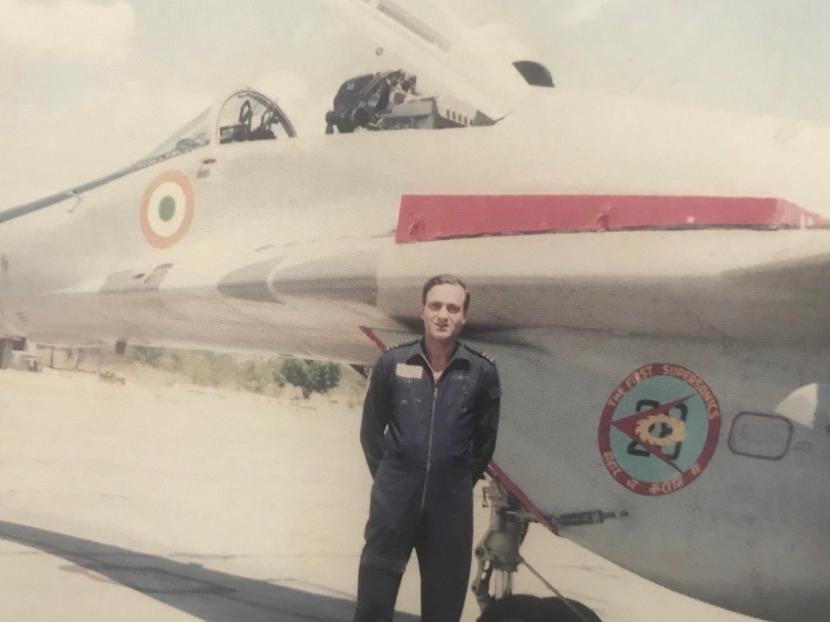
As a matter of fact, I used to brief and show my younger pilots that if you went up faster on the throttle than the onset of g, the aircraft would be on the higher side of the curve and would keep accelerating even at 9g. In that case, the options were only two, either reduce the power to get the speed back or pull more than 9g, the latter option being beyond the laid-down limits for the aircraft. The corollary was that, at the correct speed and with the correct technique, the 29 would keep turning at 9g at low-levels till either you conked off or till the gas ran out. I mean the gas had to run out either in you or the aircraft if you wanted to foolishly continue with such a manoeuvre for a prolonged duration. Such was the brute power of the two engines on the 29 and the thrust-weight ratio. Naturally, our rate of climb was also better. While range fuel consumptions were better for the Mirage due to the shape and the resultant profile drag apart from the weight and the single engine configuration, in combat situations, we ended up consuming almost the same fuel due to the fact that the 29 did not have to remain in the afterburner regime through out the engagement.
Pudding was naturally upset with this outcome and convinced Jeff to repeat the sortie. Jeff agreed since a couple of other parameters, particularly in initial and sustained rate of climb, had to be rechecked in any case. So next day in the green period, there we were, Pudding and I, with Vicky and Joe in the rear cockpits I think, to haul the aircraft around again and measure the figures. Quite naturally, the results were the same as before. During debrief, Pudding first started off with the proposition that we were not comparing pilots but aircraft and, therefore, instead of me, somebody else should fly the 29. While I was quite happy to let even the youngest and most inexperienced pilot fly in other tactical exercises, such 9g manoeuvring and handling the aircraft to its limits at low-levels was something that one could not leave to a lesser qualified and less experienced pilot.
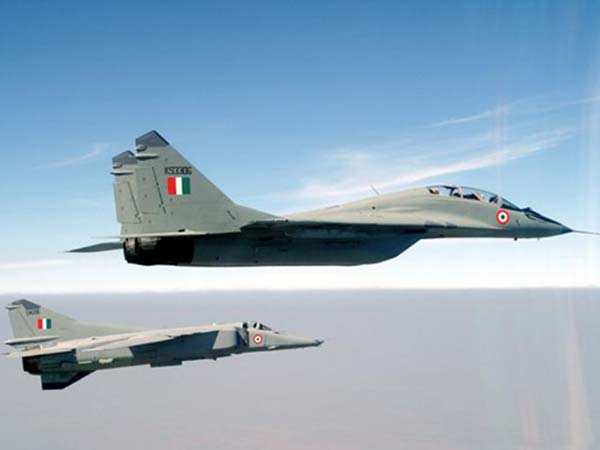
I, therefore, opposed the suggestion and Jeff agreed with my view. In a lighter vein, I also made a counter-suggestion that, instead of Pudding, someone 40 Kg lighter fly the Mirage which might improve its thrust-weight ratio and thus its performance. I am sure if Pudding had been wearing slippers at that time, I would have got them immediately but since he could not easily bend down and undo his flying boots, I got away with just glares. If only looks could kill. I also remarked that the Mirage could be flown by anybody since you merely demanded the best performance from the smart fly-by-wire system. Unfortunately, with a ‘dumb’ flying control system in the 29, we needed rather smart pilots to fly it to its limits. Pudding let me off again, having known each other quite well since the early years of our flying in Hasimara/Bagdogra. Finally, it was decided by Jeff that we would do yet another trip for the instantaneous rate of turn, to be measured only through 90 degrees of turn. While we were leaving the briefing room, Joe just whispered “Dirty Harry getting dirty looks, Keep checking 6”. As may be obvious from the foregoing, we were ahead even within 90 degrees while sustaining our speeds.

Later, we got into group combat and specific missions to try out the aircraft in their designated roles, where even the most inexperienced of our lot were given the opportunity to participate, some with less than 50 hours on type. From the tales I heard in and outside the briefing room, I know they all had a lot of fun while learning DACT with a capable and experienced adversary. While I do not wish to go into individual skills and claims in this area, it may not be difficult to guess these, being typical of die-hard fighter jocks. Suffice it to say that, in these exercises, our radar, IRST, HMSD and the voice information system really proved their worth and were put to good use.
Over the two weeks, I think we all had a great time and built a good bond between the two teams and the fleets, despite all the professional rivalry. In this regard, I particularly remember ‘Fuzz’ Moulik getting quite sentimental and emotional with his course-mates and friends from the other side, particularly “Sexy” Saxena, I think, from the Mirage fleet. Those who know Fuzz will know what I am talking about. For those who do not know Fuzz well, Fuzz gets all emotional and sentimental over a couple of drinks with friends but, underlying it, one can see that he really means every word of affection and would do anything for a friend. Pudding and I remained friends, though rivals for a long time through our careers which took us on different routes. One of the young friends that I made from Mirages was Cheema, now flying for Jet Airways, and we still play golf and share a drink whenever I am in Delhi and he is not on the roster for the next day. I got to know Cheema, then a Flt Lt, in very peculiar and rather funny circumstances that I must add as the concluding episode of Ex Lightning.
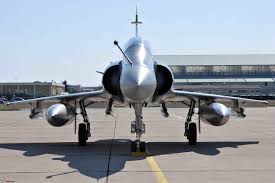
The exercise got over on 14 April and the next day the Mirages were to fly back to Gwalior. Having known Pudding for so long, I invited him along with Jeff and a few others to a dinner in the best place in town those days, the Blue Diamond. The GM of Blue diamond, Rajan Kelshikar and his wife Neelu, had become real close to Malini, my wife, and me through the induction days since they were taking care of the Russian Warranty Team and catered for most big events at the base and the VIPs visiting us. With Rajan being kind enough to include me for discounts in the hotel, I could afford to invite a fairly decent number to the hotel as their farewell dinner. After a few drinks, Pudding got a little sentimental and carried away affectionately calling me by the distorted pet name he had for me from Adampur days, ‘Khappusky’, a Russian variation of the pet name I had on Hunters in Hasimara, and said that he still could not accept that the Mirage did not out-perform the 29, at least in the instantaneous rate of turn.

I tried to pacify him by saying things like that the Mirage was certainly a good-looking aircraft with some great qualities and systems and he should be happy that he got the beauty while I had the beast etc. Not being able to reconcile to going back in this manner, Pudding suggested that, before they ferried out the next morning, he and I should do a 1 Vs 1 to prove who was the better pilot and which really was the better aircraft in front of all the people on the base right overhead. For this, we should take off in a spectacular manner; he would take off on Runway 10 while, simultaneously, I should take off reciprocal on 28, each in our lane on the same runway, do a roll of the top and from there engage in a 1 Vs 1. Jeff was watching this conversation with a wisp of a smile and winked at me to give me encouragement.
I responded by asking pudding which Air Force he was in and that, in any case, while he could maintain his lane on take-off on the DD with its sophisticated inertial navigation system, I could barely keep the brute of a 29 on the entire runway with its two engines in full afterburner. In any case, they were supposed to ferry back quietly the next morning and the roar of three engines in full afterburner at one time would wake up even the dead and perhaps make the AOC, who was not particularly fond of me, wonder what on earth was going on, come out of his office and lynch me from the nearest tree. Why AOC Bindra was not fond of me and the good times we had together will make for another interesting story later perhaps. Pudding kept insisting on a fly-off before he left while I kept telling him to enjoy himself, his drinks and go home without such a shoot out. Jeff then told me to go ahead and take him on.
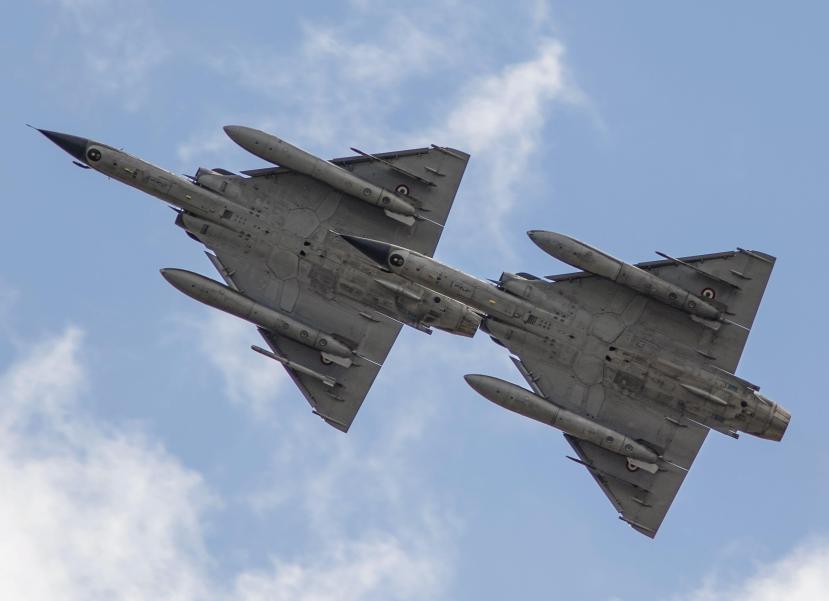
I, then, proposed that we take off with a break so that it sounds like two aircraft doing their own thing, perhaps an air test or something even like a take-off for ferry and time each aircraft from wheels roll. Each would then do a loop after take-off, a 360 degree turn and end with another loop, the whole sequence being timed from start to finish. The aircraft with the lesser timing would have proven its performance along with the skill of the pilots. A case of Black Label was agreed as the prize. The time would be kept by Jeff with a time-keeper from each side. Flt Lt Cheema was nominated from the Mirage fleet while, I think, Late Rathan or/and young Sandeep Singh were sent from our side to the ATC. Well, that is how I got to know Cheema well. I would not like to reveal the timings here but suffice it to say, the verdict was clearly in favor of the 29. After the event, Pudding tried to argue that timing from wheels roll was unfair since we had two engines and he took off on a single one. Guess he wanted us to be foolhardy enough to fly the routine on a single engine to be even. Even from unstick, the 29 was ahead by a vast margin for obvious reasons. AOC Bindra never found out, I guess, since he never asked me a question on this nor issued a warning. As far as I know, he did not question Jeff on this either. Pudding, before leaving, gave me the money for four bottles which we busted up in a fleet party on my birthday after a week on 23 April. The Sqn is still waiting for the remaining eight bottles. I last reminded Pudding of the remaining debt a month before he retired as the AOC-in-C WAC. In the meantime, Cheema got into the bad books of Pudding as the messenger with bad timings.
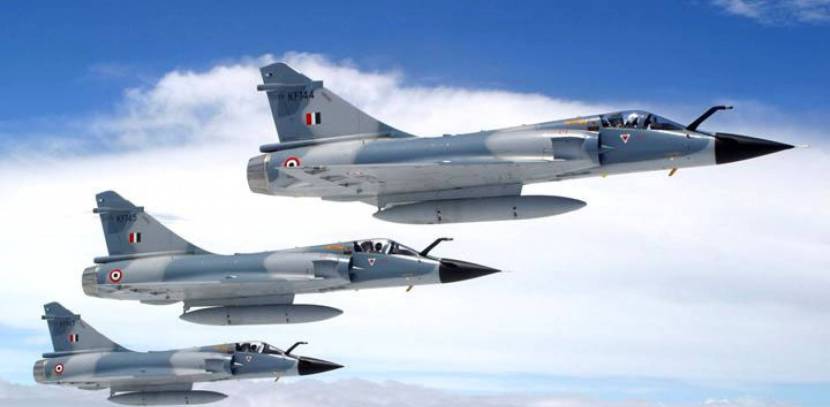
I think it must be obvious that I enjoyed the ’29 a lot, a little more than the Hunter on which also I have some very fond memories. With its superb aerodynamic qualities, ‘light-n-easy’ control forces, the reserve of power and some great and rugged systems not seen in contemporary fighters, the 29 was like a multi-million dollar sports car which I enjoyed hauling around and exploring its limits. Certainly, the beast was a beauty to handle and never let me down. Nor should it let down anyone with a good head on his shoulders. Handled and serviced correctly, I think the ’29 is one of the best fighting platforms in the world even today and should benefit by the upgrade in the IAF, if done right. I certainly wish the upgrade had come in my time but better late than never.”
Published On